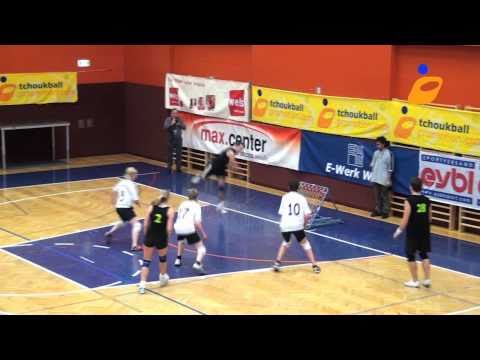I was watching Roland Garros this last few days and it got me thinking: what would happen if we did a tournament where each team has to play each other more than once to define the match?
- Maybe we would need way longer tournaments, or many many more courts, or less teams playing.
- There would also be lots of spontaneous down time whenever someone wins 2x0. This can be good or bad.
- Games could be shorter, going in the other direction that squad format goes.
I think the most realistic option to try it out quickly would be in a small tournament with just a few teams, or a liga format that lasts a whole season within a club/neighbor cities.
6 Likes
Yes, and must win the tie break game by two goals difference !
4 Likes
I’ve heard proposals that the finals could be 3 short games instead of one long one.
Not sure how I feel about changing the format half way through a tournament, but if you do this from the get go, could be fun!
2 Likes
What’s the difference between a best of three and one long game with a couple of breaks?
I guess the “reset scoring” after each break… You can turn the game even if you score less goals, for example. Let’s say we see 4:0, 0:1 and 0:1. Maybe it would break a bit the dynamics when one team is having a very big advantage? Also it could go the other way around and finish way earlier if same team wins first two sets. Apparently, winning with less points happens in 4.5% of tennis matches – which have an extra “reset layer”, as a match is made of sets made of games made of points.
No idea if that’s good or bad.
2 Likes
tennis is not a team sport tho, i think that makes a great difference in how you can trnasfer its games mechanism to polo.
i would rather have : a bigger court , 1 more player on court, more zoning rules around the goal and board / corners area.
i played a variation on big court that i like as well : the limits of the playing zone is 40 x 20 but no boards , instead just more open field. although like soccer or basketball if the ball comes of the line its out ( the p’ayers can roll out the zone )
it makes passing harder but also get rids of all the “on board melee” battles . if the court is even bigger its better and gives more space for passing / receiving safely. there is less contact as there is more space. i would cap the ratio tho because more speed can be generated on wider courts
2 Likes
compare the ratio of “hitting the ball with success vs failing it” of tennis and polo tho… if you shorten the length of the game this stats is also to consider
another interesting conceptual difference, as the failing in polo is kinda funny… in tennis, if you fail to reach the ball, it is out and the point is over. in polo it stays in and someone else will eventually take it and do something else with it.
in tennis there is the success of scoring a point, the success of hitting a ball and sending it over and the catastrophic failure of missing it and giving away a point. in polo, there is the ultimate success of actually scoring a goal, some success on making a good pass and/or advancing the game in your favour, and a string of mild failures that don’t really matter that much (in comparison to tennis failure) and at most may change who has possession.
2 Likes
but if both players in tennis fail to hit the ball , the game ends up very quickly (someone automatically get a point if you fail) so any long exchange of balls is exciting as you are spectating “a row”
in polo if everyone fails all the time nothing happen  no points get scored.
no points get scored.
when people manage to conect its the same tho and you spectate a serie of "succesful touches of the ball "
which generate excitement .
what you would want to do for a roland garros format of polo would be that each team has a set amount of time to make their play , and then the defense get the ball after a certain time / or after an atempt to score , playing each possession like a game if tennis.
to balance it you could withdraw completely mallet to mallet contact and shoulder to shoulder: teams can only rely on cutting passes and trajectory. also big game changer : no boards . instead , a tennis court type limit.
this way you will have that concept of making more short length games against the same team with about the same amount of courts and time … maybe ?
for reference here is a game of tchoukball  the rules and mechanism are interesting with limited players vs players interaction. its co gender.
the rules and mechanism are interesting with limited players vs players interaction. its co gender.
1 Like
